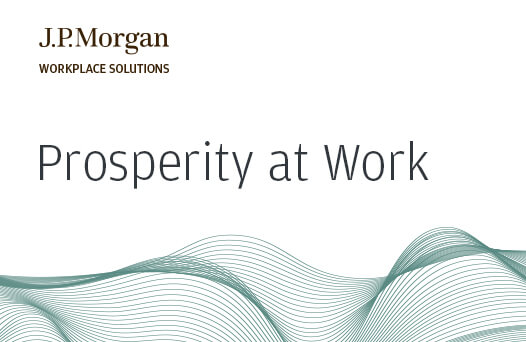A common challenge faced by companies when launching an equity compensation plan is a lack of financial knowledge from employees about what is being proposed.
Equity compensation can be a difficult concept to understand, with its own terminology and rules around elements like vesting and tax. While effective communications leading up to and during a registration period can bridge this gap, the need to explain the plan details and potential upsides can prove time-consuming.
Against this backdrop, there is little doubt that it would be beneficial for companies if there was greater understanding of personal finance-related issues among individuals by the time they enter the workforce, something the Financial Wellness Program at Stanford University is looking to address.
Financial wellness
Danial Khan, Financial Wellness Program Manager at Stanford University, is at the vanguard of an emerging movement looking to equip young people with the skills to cultivate financial wellness, with this drive holding the potential to over time unlock greater knowledge and understanding of personal finances across the population.
“Maybe financial wellness is not a familiar term, but essentially we try to align financial well-being with life aspirations. A lot of that is blending personal finance with health promotion, and trying to make financial education and well-being promotion more accessible to people,” he said, on a recent edition of the Own Up by Global Shares podcast, in conversation with our own John Bagdonas and Chris Dohrmann.
Where to begin with financial wellness
The Stanford program seeks to ask fundamental questions at the outset designed to make students think more consciously about their financial life, such as:
- How do you manage your money?
- How aware/intentional are you around your spending and saving?
- What does it mean to set financial goals?
- How do you get started in investing?
Danial added that students availing of the program are also often conscious of issues related to employment and equity.
“All those aspects of starting your career, navigating the benefits, getting paid for the first time on salary, getting bonuses and stock options, all that stuff comes up,” he said.
Financial wellbeing
A key concept underscoring the program is financial wellbeing. Danial likes to use a particular definition when teaching students.
“The Consumer Financial Protection Bureau defines financial well-being as having some sense of security and freedom of choice currently and in the future. Most people around the world, no matter what perspective you have, you just want to feel like you can manage the day to day and have that sense of security in terms of what’s coming down the road, expected and unexpected,” he said.
Danial also links the idea of financial wellbeing with the freedom to pursue careers that feel meaningful, rejecting the idea that people must choose between making a good living and doing work they feel passionate about.
“You don’t have to choose between one or the other, and I think working on your financial wellbeing specifically can help you be able to make decisions and have freedom of choice to do the work that you want and not have to sacrifice what you value most, whether it’s in your spending or your career,” he said.
Who seeks out the financial wellness program?
Danial told Chris and John that more women than men look to avail of the Stanford program.
“In the one-on-one coaching conversations, about sixty to seventy per cent of those I talk to are women. They are the ones reaching out and seem to have greater needs around this,” he said.
Looking beyond gender, he also specified international, first generation, and low-income students as being more likely to make contact, with these individuals more consciously concerned with seeking out guidance and looking to take control of their finances.
On a broader level, he pointed to the reality that many young people enter college with limited financial knowledge.
“Most people don’t have a high school personal finance requirement. That means a lot of students are coming into Stanford with little to no financial education and so, even just having those first conversations with them, I think it is an important place to start,” he said.
Financial wellness vs financial literacy
Danial pointed out that financial wellness and the perhaps more well-known term financial literacy are not interchangeable.
“I think the wellness focus is really powerful because it represents the whole person and makes it more accessible for them to learn about personal finance and make it seem more relevant to people,” he said.
He added that this conscious emphasis on wellness as distinct from literacy extends to how topics are framed when engaging with students.
“Instead of budgeting, credit, debt, investing, we use terms like spend mindfully, earn enough, borrow with intention, grow your money, and I think for anyone those things seem a lot more relevant or personal. Part of the idea is to give students or early career professionals enough to just get their foot in the door, when before they may have had these scripts in their head saying investing’s not for me, but I do want to grow my money. I like to think of these first steps as just developing mindfulness and intentionality in your financial life, so it makes it a little more approachable and accessible for the majority of people who don’t have a financial background,” he said
Find out more
For more on financial wellness, listen to the interview on Own Up by Global Shares here.
This publication contains general information only and J.P. Morgan Workplace Solutions is not, through this article, issuing any advice, be it legal, financial, tax-related, business-related, professional or other. J.P. Morgan Workplace Solutions’ Insights is not a substitute for professional advice and should not be used as such. J.P. Morgan Workplace Solutions does not assume any liability for reliance on the information provided herein.



